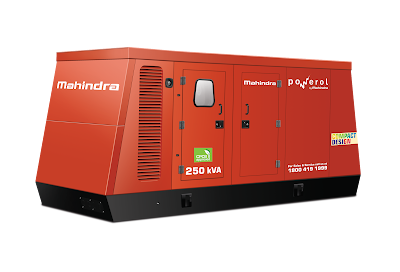Mahindra & Mahindra entered the diesel
generator sets market in 2001
under the name of ‘Powerol’. The group’s expertise in the manufacture of
internal combustion engines soon propelled the Powerol brand into a leadership
position.
Since its launch, Mahindra Powerol has
established itself in various industries as a dependable, durable and fuel-efficient
diesel genset brand .It has found
acceptance in many countries across the world. Without exception, the brand has
been endorsed by companies and industry experts.
Today, the Mahindra Powerol range extends from
5kVA to the high-capacity 625kVA generators. The brand caters to diverse
industries -- like hospitals, hotels, real estate segments, small scale
industries, infrastructure, tone crushers and manufacturing units.
Thanks to continuous customer centric approach
and product innovations, Mahindra Powerol has been awarded the ‘SuperBrand’ status on two different occasions.
SuperBrands’ - the world’s largest arbiter of
branding and participation is strictly by invitation and selection. pays
tribute to the strongest and most valuable brands in the world through an
intense process of selection. It is considered the
most respected and universal seal of enduring excellence. Only brands which
have been highly rated and have received exemplary scores from consumers and
the Superbrands Council are granted ‘Superbrands Status’.
Mahindra Powerol’s position as a SuperBrand
indicates that it is highly rated and has received exemplary scores from
consumers and the SuperBrands’ council.
Attaining a SuperBrand status strengthens a
brand’s position, adds prestige and reassures consumers and suppliers that they
are buying the best brand in its category.
Mahindra Powerol was also awarded the
prestigious Deming Prize in 2014. The Deming Prize is a global quality award
instituted by the Union of Japanese Scientists and Engineers (JUSE) that recognizes
businesses that have successfully implemented Total Quality Management (TQM).
Mahindra Powerol also won the influential Frost
& Sullivan Voice of Customer award for the Most Preferred Genset Brand in
the telecom segment and for providing the Best Bang for the buck in India.
Gensets from Mahindra Powerol
are known for their fuel efficiency and reliability.


